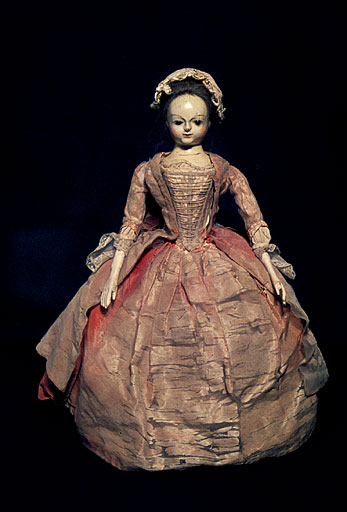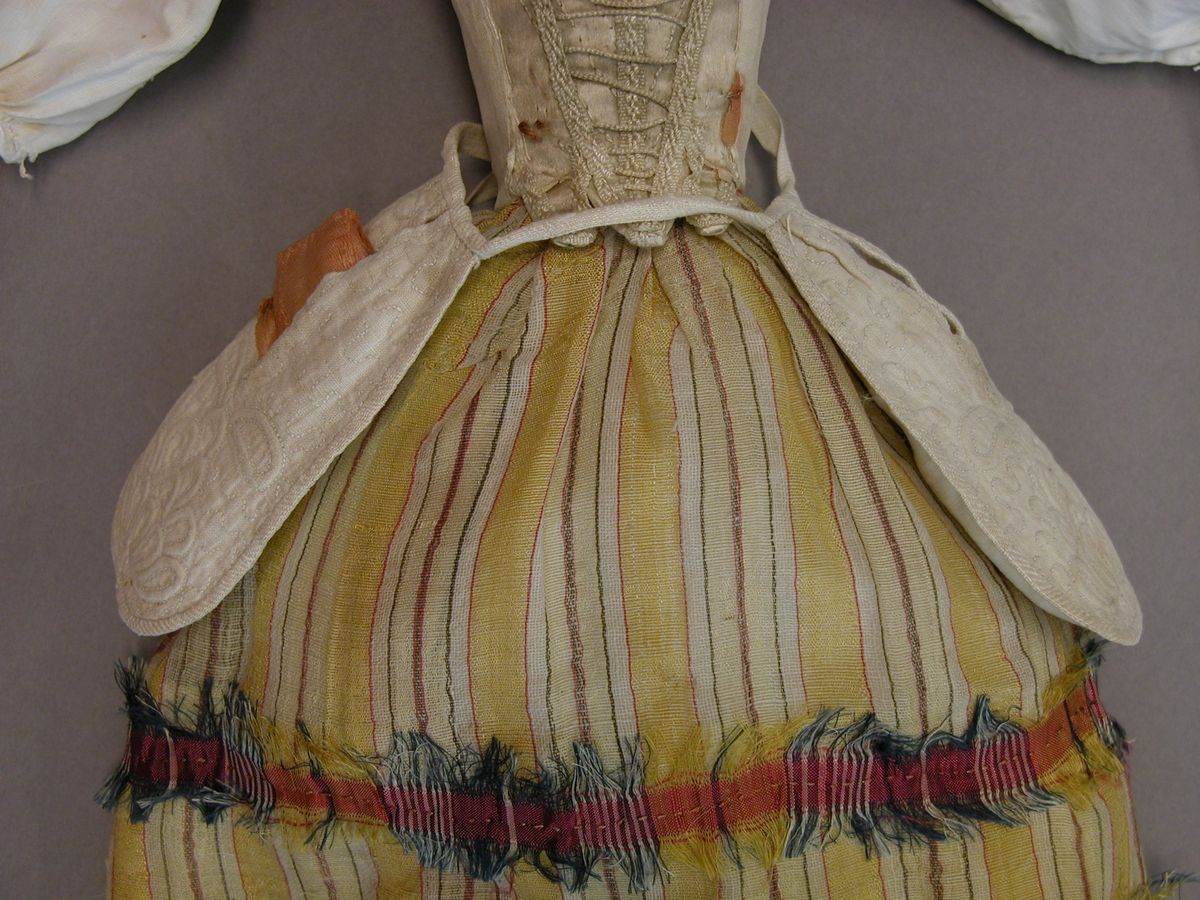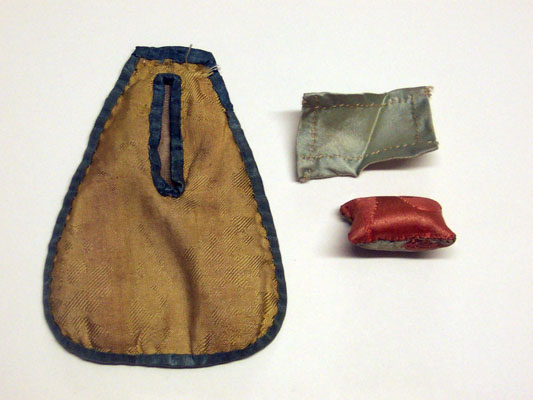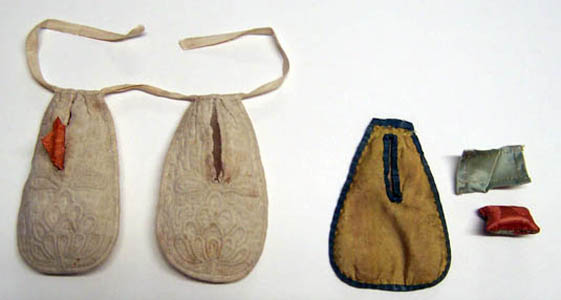doll
Summary
Doll of painted wood. Finely carved head with black and white glass eyes and light brown hair drawn to back of head. Dress - Pink silk, fading and splitting at the front. Open robe with elbow length sleeves. Puffed skirt. Other clothing with the doll comprises: Stays - Cream satin, decorated with chequered cream silk ribbon. Petticoat - Alternating panels of cream satin and cream corded silk. Lined with cream wool. Pocket - Sewn to quilted petticoat, yellow silk damask bound with blue silk ribbon, lined with striped linen, contains pink silk damask and blue brocade pincushion. Pocket - pair of cream corded quilted pockets with ties, pink and red 'husswif' in one pocket. Hoop - Yellow linen. Three oval cane hoops sewn towards hem. Petticoat - White flannel. Petticoat - Yellow, white, red and blue striped silk. Chemise - White linen. Neck trimmed with bobbin lace. Full sleeves. Gloves - White kid extending above elbow. Stockings - Greenish silk with white and pink clocks. Shoes - Cream satin and corded silk, trimmed with narrow yellow silk braid. Cap - White bobbin lace pinned and sewn to satin-covered white cotton pad. Bow at CF. Hood - White cotton twilled and ribbed. Edged with black silk ribbon. Small formal floral pattern embroidered along front edge on cotton.
Display Label
Dolls have been treasured and much loved toys of young girls from the seventeenth century, if not earlier, often stylishly dressed to represent a fashionable ideal. They were also made as a publicity vehicle for dress makers and milliners, hawking around the latest styles and fabrics. The Gallery has a collection of about a hundred fashionable dolls, the earliest, like the doll in the salmon pink dress below, date from the eighteenth century. However, most date from the nineteenth century, like the doll in the main picture from the 1840s, with a papier mache head and cotton print dress. Apart from papier mache, heads might also be made from carved and painted wood, porcelain or moulded wax, with little carved hands and feet, and stuffed fabric limbs under the clothing. It was also popular to create souvenir dolls as representations of the celebrities of the day, usually actresses or royalty. The head and shoulders of the doll shown below is from a doll dressed as Queen Adelaide, the consort of William IV in the 1830s. More usually, dolls depicted occupational characters, such as pedlars, fortune-sellers or nurses, sometimes even as whole tableaux, as with the Charity School Group also pictured here.
Object Name
doll
Date Created
1740-1760
Dimensions
Height: 21ins
accession number
1955.21
Place of creation
England
Medium
Legal
© Manchester Art Gallery




